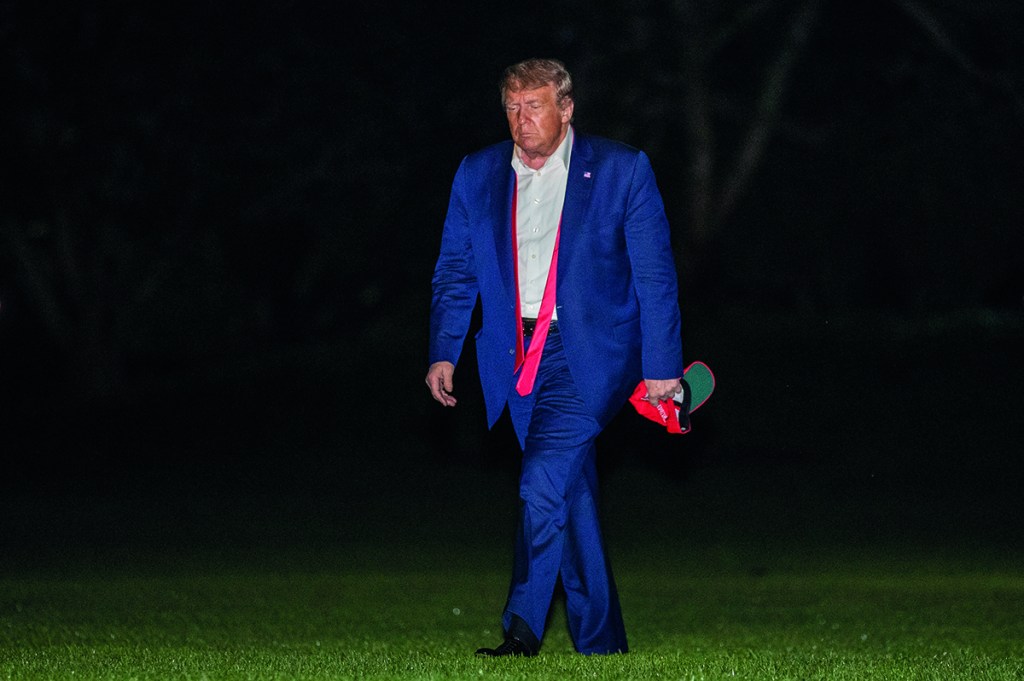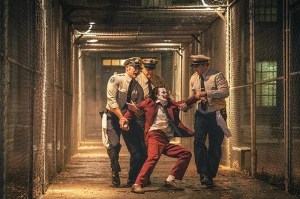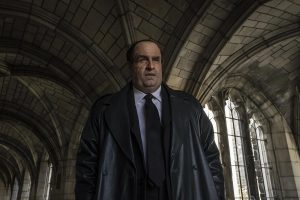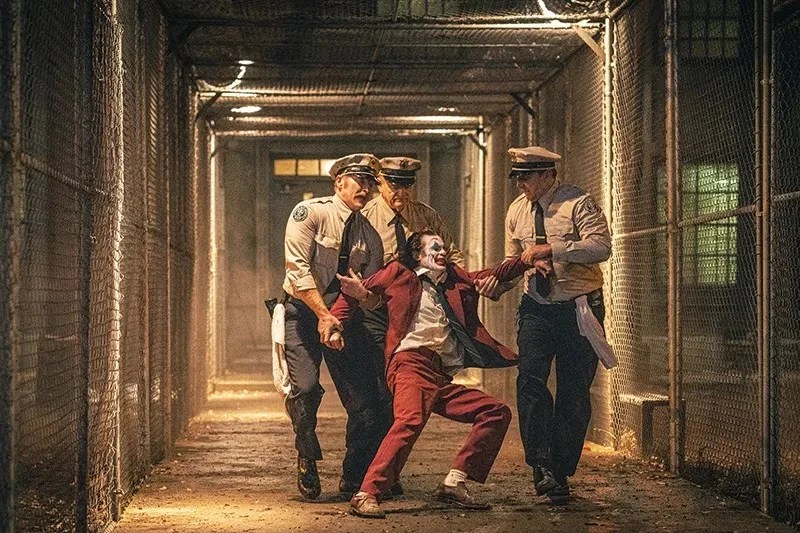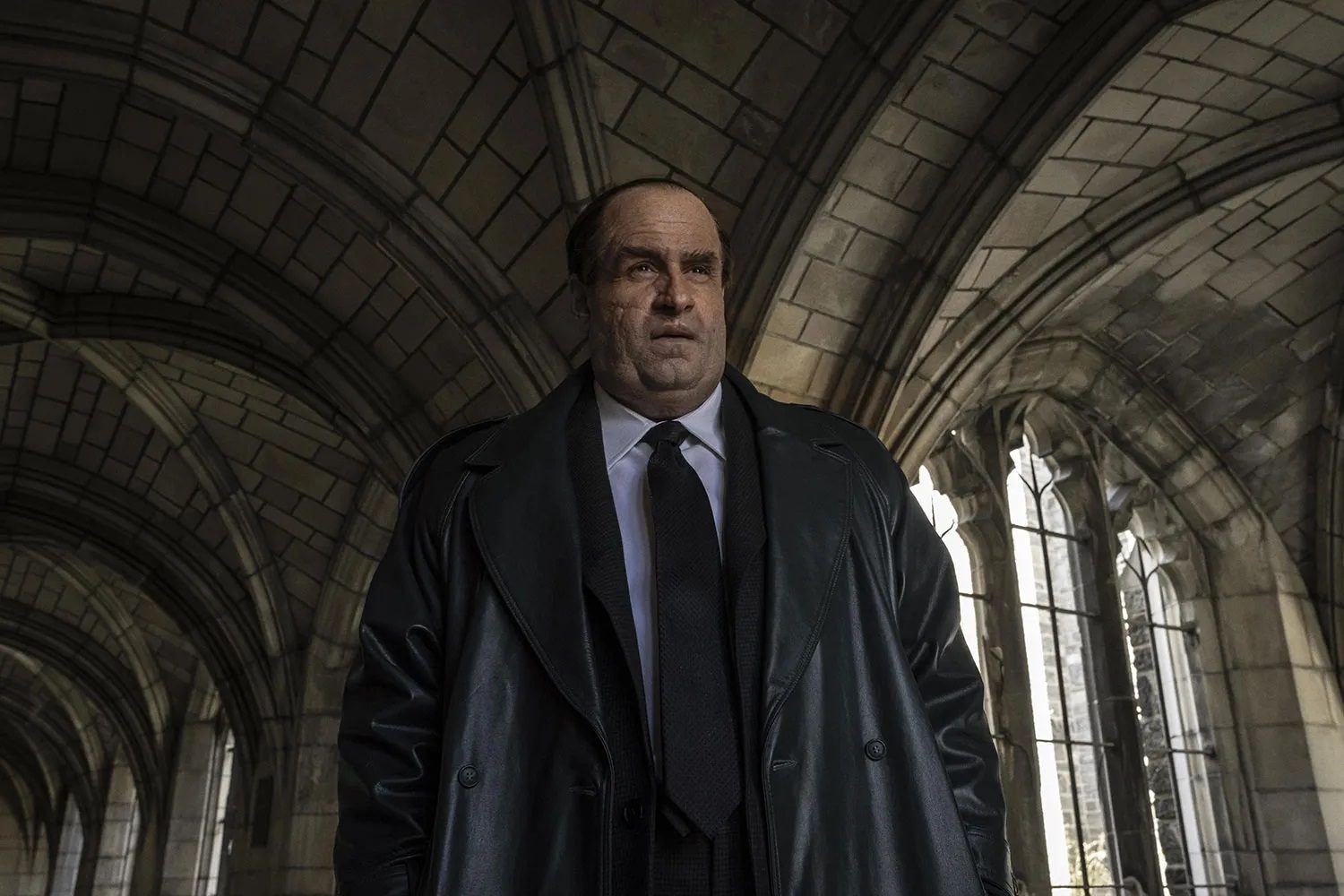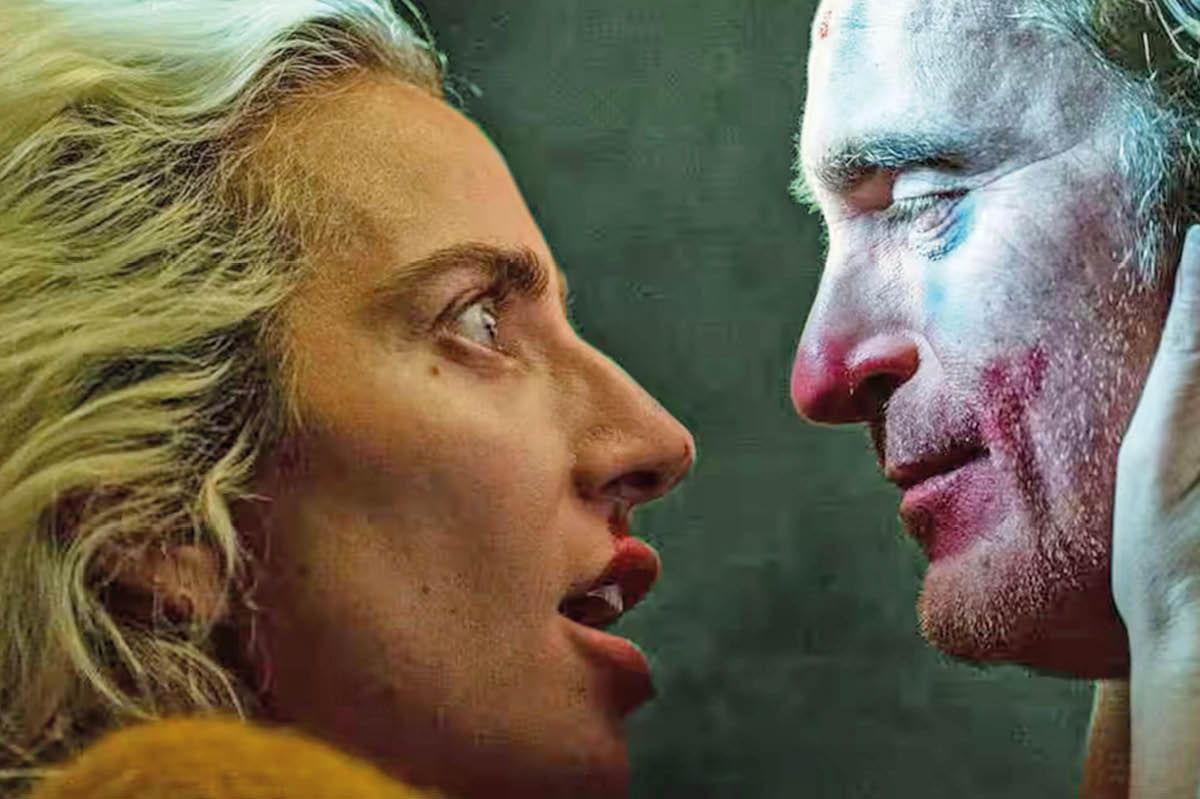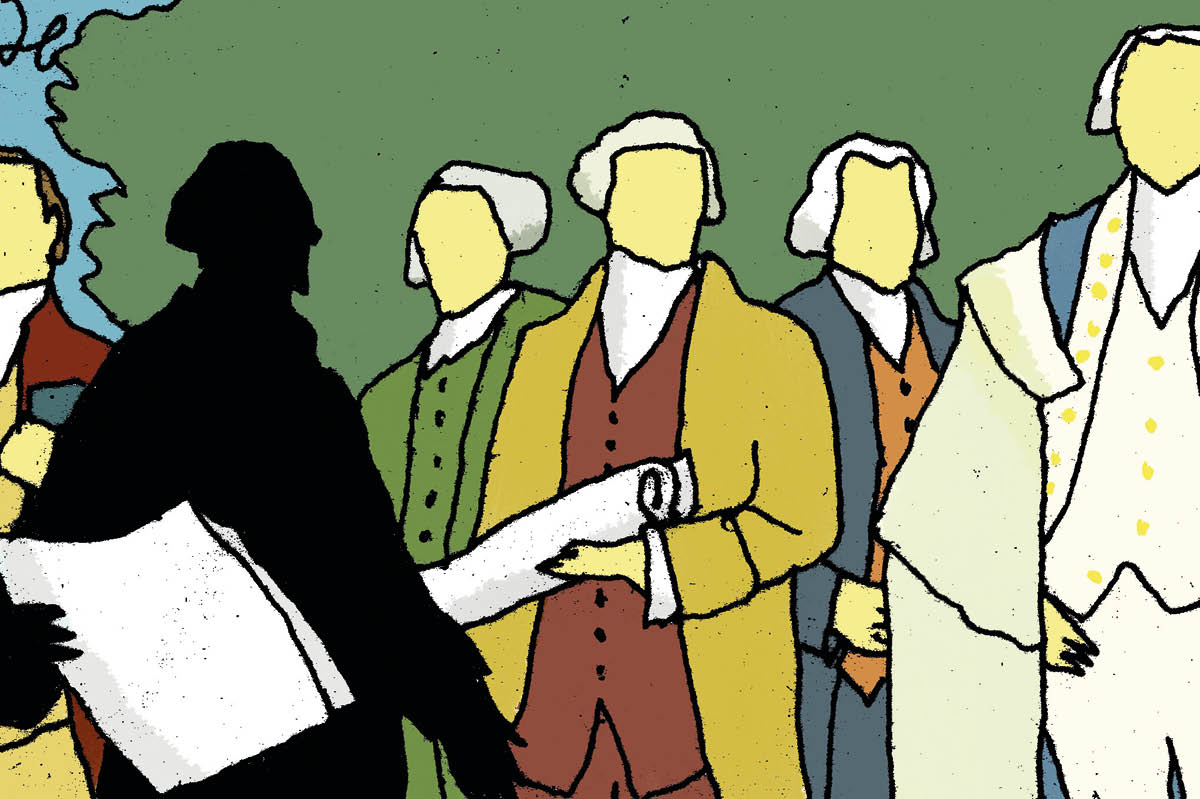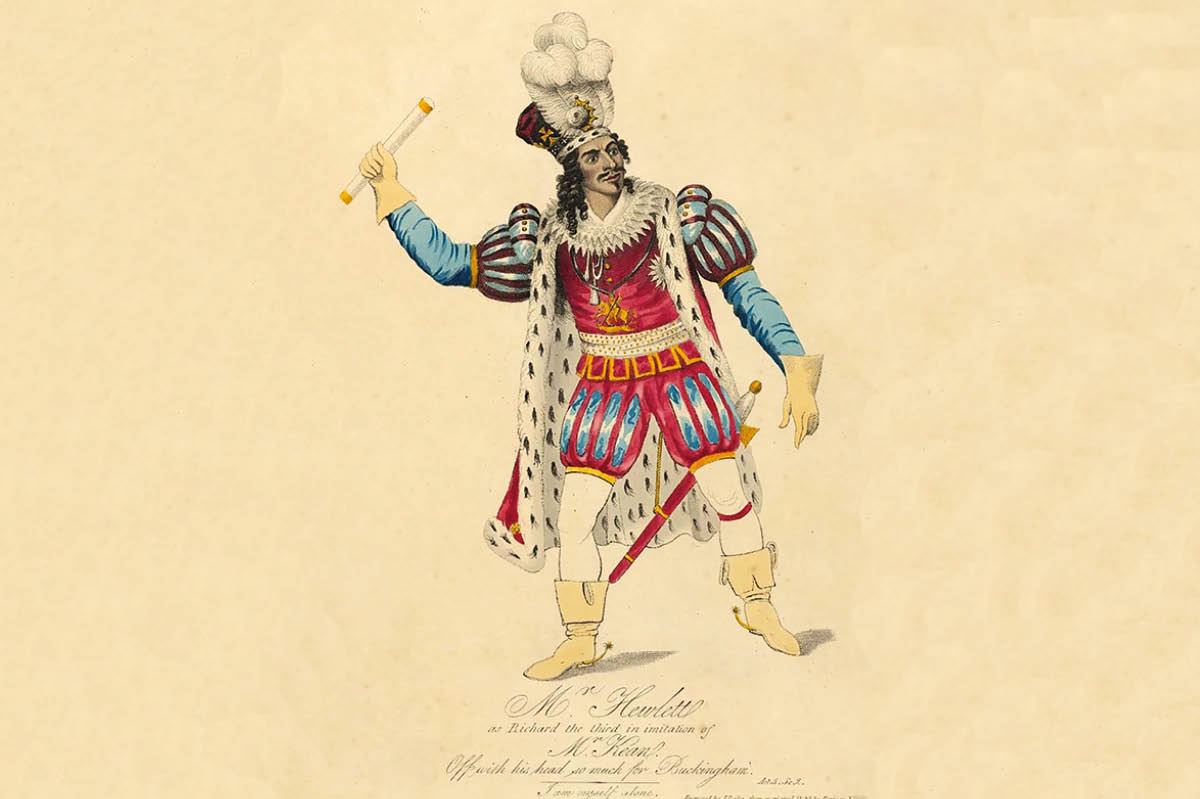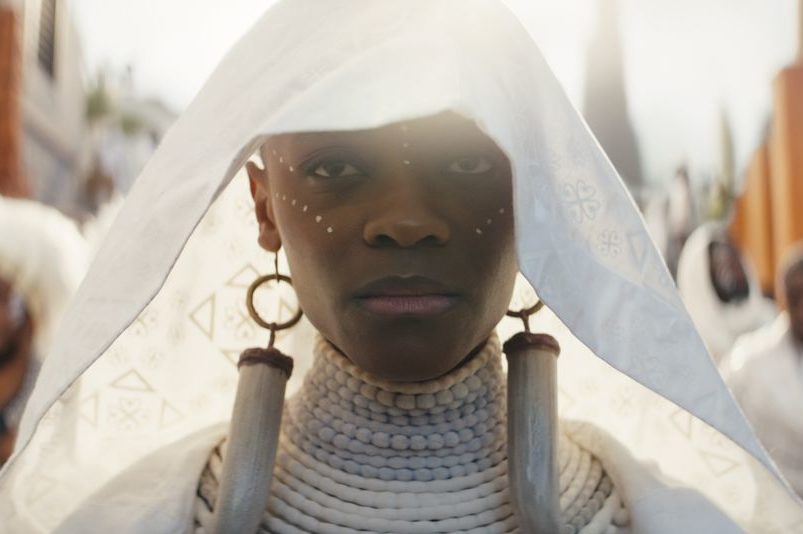The Obamas loved Hamilton. It was the biggest show to hit Broadway since Cats or Rent, with ticket prices reaching four digits. Michelle, who urgently needs to read Buddenbrooks or visit the Sistine Chapel, called Lin-Manuel Miranda’s musical the ‘best piece of art in any form that I have ever seen in my life’.
Hamilton was present at the dawn and eclipse of the Obama years. Miranda first publicly shared material from the musical at the White House’s inaugural Spoken Word evening in 2009. Seven years later, Lin-Manuel joined Barack for a cringe-inducing freestyle rap in the Rose Garden. Hamilton, the decrepit rockers of Rolling Stone informed us, was ‘the Obama era’s Wall Street, its 24, its Spice World’: artistic, historic, multi-ethnic, optimistic. Or was Hamilton, like the actual Obama, affected, ponderous, shallow, glib and over-praised?
The last four year have produced no equivalent to Hamilton, no epitome for the Trump presidency. In the arts, this has been a stagnant time. Official taste has been caught in amber. Sales of fiction have continued to fall, even as NPR-approved authors like Sally Rooney and Colson Whitehead have prospered. Sinclair Lewis’s It Can’t Happen Here (1935) and George Orwell’s Nineteen Eighty-Four (1949) have massively outsold most contemporary fiction since 2016. It’s hard to blame the public for turning to old books: most new novels are so painfully contemporary that they read like magazine features. Rooney’s Normal People (2018) was a one-woman kangaroo court on modern life, with a predictable verdict. Kristen Roupenian’s Cat Person (2017), the monstrously viral New Yorker short story with #MeToo themes, was a trial too. Appropriately enough, many readers took it for reportage.
The movies have fared no better. Ticket sales have declined, with blockbusters designed for Hangzhou as much as Houston dominating the market. The New York Times could publish as many strained, lyrical essays about Black Panther (2018) as it wanted: the point of the movie was to sell Disney figurines to little boys. Joker (2019), another nihilistic superhero movie, was touted as the cultural touchstone of the era. Trump even screened it at the White House. But Joker was a laborious pastiche of old Martin Scorsese movies like The King of Comedy (1982). It reverberated with controversy for a few weeks, but has lived on only as a meme in incel-haunted message boards.
More successful were Ari Aster’s grief-stricken arthouse horrors Hereditary (2018) and Midsommar (2019). For those who experienced the Trump era as an unambiguous trauma, a jubilee of brooding and doubt, Aster’s movies caught the mood. Still, Hollywood was focused on remaking ancient properties like Star Wars. Creatively and politically impotent, actors were left, like Robert De Niro at the Tony Awards, ranting about the President. This, unlike their movies, guaranteed applause.
Television, the opiate of a chattering class letting itself off the intellectual hook since The Sopranos (1999), has entered a stupor of its own making. Zeitgeist-chasing dramas like The Handmaid’s Tale (2017) were a curious mixture of didactic moralism and kinetic violence. The late-night hosts have been unwatchable; they think they’re Bob Woodward, but none of them is even Jon Stewart.
Comedy too, seems broken. Sarah Cooper, 2020’s hottest new comedian, lip-syncs along to Trump clips, like a pilot fish trailing a whale. If she has her own jokes she hides them well. Hannah Gadsby’s colossally hyped Netflix special Nanette (2018) was summed up by its scores on Rotten Tomatoes. The critics, thrilled to see a Guardian op-ed spun into a few weak gags, gave it 100 percent. The plebs, who wanted a laugh not a lecture, gave it 25 percent.
There has been one exception, one artwork that fascinated and remains fascinating. The greatest spectacle of recent years has been the daily presence of Donald J. Trump in the White House. No product of America’s culture industries can compete with the Dadaist lunacy of this presidency. As the countdown to Inauguration Day began in 2016, pundits warned us not to ‘normalize’ Trump and thereby usher in the Fourth Reich. They needn’t have worried. It was never going to be normal.
Normal presidents are written up in hagiographies or portrayed in movies. The 45th president represents a decisive break from that. Trump is a viral video that never ends, an engine of bizarre comedy, a relentless one-man content generator. Incapable of decorum, incongruous in every setting, incompetent at the job at hand, he has transfixed the world.
It was never about politics. Trump was, and remains, an amateur in Washington. His most important reform was the brainwork of Kim Kardashian. Instead he is a hysterically postmodern and unbelievably trans-media performance artist of the very highest caliber.
For five years the culture has revolved around him, like celestial fragments orbiting an especially bloated gas giant. One literary agent, surveying his inbox in 2017, complained that it was stuffed full of Trump novel pitches, all with ‘story elements cribbed from a CNN chyron’. Get Out (2017), a film satirizing the fraught race relations of the late Obama years, was now dubbed ‘the first great paranoia movie of the Trump era’. Everything has been about Trump, even when it has nothing to do with him.
Trump the Queens vulgarian, urbane Manhattan’s favorite punchline, had finally won exactly what he wanted: the rapt attention of billions of people. Megalomaniacal it may be, but it’s a recognizably artistic goal. Just as a lesser artist like Marina Abramovic didn’t sit in MoMA for 740 hours because she’s a wallflower, so Trump didn’t become president so he could pass some tax cuts. He wanted you to think about him, all the time.
The media made it happen, even as they posed as his greatest nemesis. ‘One thing I’ve learned about the press,’ he wrote in The Art of the Deal (1987), ‘is that they’re always hungry for a good story, and the more sensational the better…if you are a little different, or a little bit outrageous, or if you do things that are bold or controversial, the press is going to write about you.’
Artists from Oscar Wilde to Norman Mailer, from Morrissey to Kanye West, have used the press like this. It’s not how a president usually handles journalists: Trump’s not JFK, palling about with Henry Luce. He has more in common with Marcel Duchamp, doodling his signature on a urinal, knowing the story will take care of itself. Looking at the media data, from ratings to retweets — the only metrics Trump cares about — this presidency is an astonishing success.
The peaks of Trump’s artistic legacy are a series of rich, unnerving tableaux vivants. Who could forget Trump’s visit to Riyadh in May 2017, when he, King Salman of Saudi Arabia and President Sisi of Egypt were photographed around a lambent globe? Dramatically underlit by the eldritch orb light, the clustered leaders looked like occultists in an H.P. Lovecraft story, summoning primordial terrors from beyond the stars.
Then there was the partial government shutdown in January 2019. Trump welcomed the Clemson Tigers, the college football national champions, for a banquet reception at the White House. Left without his usual caterers, he called his favorites, McDonald’s and Wendy’s. He stood in the 140-seat State Dining Room, arms akimbo, smiling like a roguish buccaneer, imperious behind an enormous silver-plattered fast-food feast. This was one of the most flagrantly, tub-thumpingly American images to appear since the Stars and Stripes was raised at Iwo Jima.
In a still from the UN climate summit of September 2019 that may one day be called ‘The Judgment of the Old World on the New’, Trump strides to another meeting, unaware that he’s being watched by St Greta Thunberg. She is hatefully eyeballing him in a fuchsia sweater, her arms folded, her hair coiled into a puritan ponytail as tight as her expression. Trump is bronzed, Greta is pale as leprosy. She has the spoon eyes of a hobgoblin that has scampered out of a Bosch painting. He looks jetlagged.
The standard symbolic take was that the young (Greta), who were devoted to the Great Barrier Reef, were judging the old (Trump), who were too evil to care. Or was it something deeper, the eternal conflict between plenty and pain? With the hard-bargaining billionaire playboy Trump standing for plenty — the gold furnishings and walk-in freezers that the global billions aspire to — and Greta standing for pain, a future of bug-eating and zealous recycling in a utopia run by scolds. The still was a portal into the political conflicts that will roil the globe for decades.
The latest and, perhaps, the last of these iconic pictures emerged in June. Here was the President as we’d seen him before. Patrick Semansky of the Associated Press caught Trump as he stalked back to the White House after a long-planned and somewhat under-attended rally in Tulsa, Oklahoma. Stark against a bleary nightfall backdrop of greens and browns, Trump, sagging in the midsummer heat, glows in a dozen camera flashes. His blue suit is ruffled, his tan is watery, his dangling tie is a lush crimson. He looks hunched, hulking and heavy — a sad galleon, creaking under the pressure of rough seas. His expression is that of the lonely, tragic hero for whom the penny is finally dropping, or St Sebastian, bewildered to walk into so many arrows.
Unusually for Trump, his shirt collar is unbuttoned, his tie undone, his MAGA hat crumpled in his hand. That hat, the primitive totem and ecstatic focus of the entire Trump cult, has seen better days. Headgear hasn’t appeared so powerfully emblematic since the day the last doge of Venice handed his ducal headgear to a servant with the limp abdication, ‘Take it away, we shan’t be needing it again.’
Is the show over at last? Is this the final, textbook image of a defeated president, stretched out until he twanged between the virus and the riots? Decades of absurd peacocking – the artist’s will to stand out – have led Trump and us to the precipice of political catastrophe. In the last four years, America has become ever more like its president: erratic, scrappily performative, hard to truly understand. It was always difficult to guess what he would do next. Now it’s difficult to guess the American people’s next move.
This article is in The Spectator’s October 2020 US edition.



